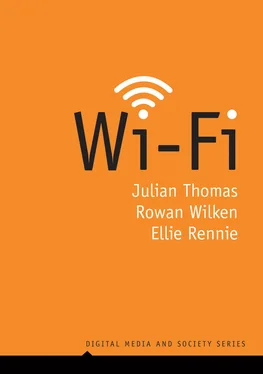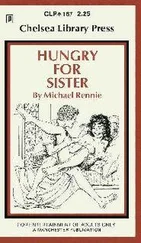35 29
36 30
37 31
38 32
39 33
40 34
41 35
42 36
43 37
44 38
45 39
46 40
47 41
48 42
49 43
50 44
51 45
52 46
53 47
54 48
55 49
56 50
57 51
58 52
59 53
60 54
61 55
62 56
63 57
64 58
65 59
66 60
67 61
68 62
69 63
70 64
71 65
72 66
73 67
74 68
75 69
76 70
77 71
78 72
79 73
80 74
81 75
82 76
83 77
84 78
85 79
86 80
87 81
88 82
89 83
90 84
91 85
92 86
93 87
94 88
95 89
96 90
97 91
98 92
99 93
100 94
101 95
102 96
103 97
104 98
105 99
106 100
107 101
108 102
109 103
110 104
111 105
112 106
113 107
114 108
115 109
116 110
117 111
118 112
119 113
120 114
121 115
122 116
123 117
124 118
125 119
126 120
127 121
128 122
129 123
130 124
131 125
132 126
133 127
134 128
135 129
136 130
137 131
138 132
139 133
140 134
141 135
142 136
143 137
144 138
145 139
146 140
147 141
148 142
149 143
150 144
151 145
152 146
153 147
154 148
155 149
156 150
157 151
158 152
159 153
160 154
161 155
162 156
163 157
164 158
165 159
166 160
167 161
168 162
169 163
170 164
171 165
172 166
173 167
174 168
175 169
176 170
177 171
178 172
179 173
180 174
181 175
182 176
183 177
184 178
185 179
186 180
187 181
188 182
189 183
190 184
191 185
192 186
193 187
194 188
195 189
196 190
197 191
198 192
199 193
200 194
201 195
Julian Thomas,
Rowan Wilken, and
Ellie Rennie
polity
Copyright © Julian Thomas, Rowan Wilken, and Ellie Rennie 2021
The right of Julian Thomas, Rowan Wilken, and Ellie Rennie to be identified as Authors of this Work has been asserted in accordance with the UK Copyright, Designs and Patents Act 1988.
First published in 2021 by Polity Press
Polity Press
65 Bridge Street
Cambridge CB2 1UR, UK
Polity Press
101 Station Landing
Suite 300
Medford, MA 02155, USA
All rights reserved. Except for the quotation of short passages for the purpose of criticism and review, no part of this publication may be reproduced, stored in a retrieval system or transmitted, in any form or by any means, electronic, mechanical, photocopying, recording or otherwise, without the prior permission of the publisher.
ISBN-13: 978-1-5095-2989-6
ISBN-13: 978-1-5095-2990-2 (pb)
A catalogue record for this book is available from the British Library.
by Fakenham Prepress Solutions, Fakenham, Norfolk NR21 8NL
The publisher has used its best endeavours to ensure that the URLs for external websites referred to in this book are correct and active at the time of going to press. However, the publisher has no responsibility for the websites and can make no guarantee that a site will remain live or that the content is or will remain appropriate.
Every effort has been made to trace all copyright holders, but if any have been overlooked the publisher will be pleased to include any necessary credits in any subsequent reprint or edition.
For further information on Polity, visit our website: politybooks.com
1.1A mobile Wi-Fi hotspot, provided by the Australian internet network operator NBN during the 2019/20 bushfire season, at an evacuation centre, Bateman’s Bay, New South Wales. Source: NBN Co. Ltd.
1.2Internet everywhere: public Wi-Fi, Talinn, Estonia. Authors’ image.
1.3Square at the Centre Pompidou, Paris, France. Source: F1 online digitale Bildagentur GmbH / Alamy Stock Photo.
2.1Nikola Tesla holding a gas-filled phosphor-coated wireless light bulb circa mid-1896. Source: Tesla Universe.
2.2ALOHA terminal control unit, 1971. From Schwartz and Abramson (2009, p. 22).
2.3 Apple AirPort base station. © Mark Richards. Source: The Computer History Museum.
4.1 ‘Signal Code of Trampdom’ in the Kendrick Gazette (Kendrick, Idaho), 4 June 1909.
4.2 Warchalking symbols. Source: Wikimedia Commons
4.3 ‘Another view of Cantenna II’. Source: Flickr/lungstruck licensed under Creative Commons CC BY-SA 2.0 https://creativecommons.org/licenses/by-sa/2.0.
5.1 Immaterials: Light Painting WiFi (2011). Source: Einar Sneve Martinussen, Jørn Knutsen, and Timo Arnall, The Oslo School of Architecture and Design.
5.2 ‘A WiFi network from an 1890s apartment building spilling into the street’ (Martinussen, 2011).
5.3 Café doors in the Old Town, Tallinn, Estonia, with a sticker promoting Wi-Fi availability. Authors’ image.
Many people have contributed to our work on this book, and to the research projects and writings that have led to it. We would like to thank all our colleagues in RMIT’s Technology, Communication and Policy Lab, and in the Digital Ethnography Research Centre. Warm thanks especially to Hannah Withers, who worked with us on this project in both its formative and concluding stages. We would also like to thank RMIT for the University’s generous support for our work throughout. Thanks also to Daniel Sacchero (Easyweb Digital) and Jenny McFarland (CAYLUS) for interviews with Ellie Rennie on Wi-Fi in remote Aboriginal communities ( Chapter 4).
At Polity, we wish to thank Mary Savigar and Ellen MacDonald-Kramer for their enthusiastic support of this project, their patience, and their assistance in seeing this book through to publication.
Closer to home, Julian would like to thank Jeannine Jacobson and Sam Thomas for their patience, especially when the Wi-Fi was down; Rowan would like to give a big thanks to Karen, Laz, Max, and Sunday, for their love, support, and encouragement; and Ellie would like to thank Jason Potts for giving her lots of experience with Wi-Fi troubleshooting over the years (earning her the badge for SuperTechSupport at home).
Finally, thanks to all the first pets for being excellent passwords over the years.
Julian Thomas
Rowan Wilken
Ellie Rennie
When catastrophe strikes, we see communication in new ways. January 2020 was high summer in the southern hemisphere. Holiday makers, together with their smartphones, flocked to the beaches and camping grounds of the Australian coast. But, after years of drought and record high temperatures linked to global warming, the forests were on fire. Hot days, dry air, parched bush, and gusty winds created the conditions for huge, fast-moving fires. Ancient rainforests which had never experienced fire were lost. The fires isolated and burned through small townships. They left thousands of people homeless and stranded. With roads blocked by fire and fallen trees, people were trapped in small coastal communities for many days. There they managed as best they could, sheltering on beaches, making do in tents, sheds, and caravans.
Months later, when eventually the fires were controlled or extinguished by rain, the damage to people, wildlife, and the environment was immense: 186,000 square kilometres were burnt and 5,900 buildings were lost. Thirty-four people died, and an estimated 3 billion animals were killed or displaced. As well as burning bush and buildings, the fire ravaged the essential infrastructure people rely on: power lines, water supplies, roads, and communications. The fire destroyed cellular phone towers and landlines. Fixed and mobile broadband services failed, leaving homes, visitors, and businesses without internet. Destruction led to disconnection. Electronic payment systems and cash machines could not be used; health records could not be accessed.
Читать дальше










